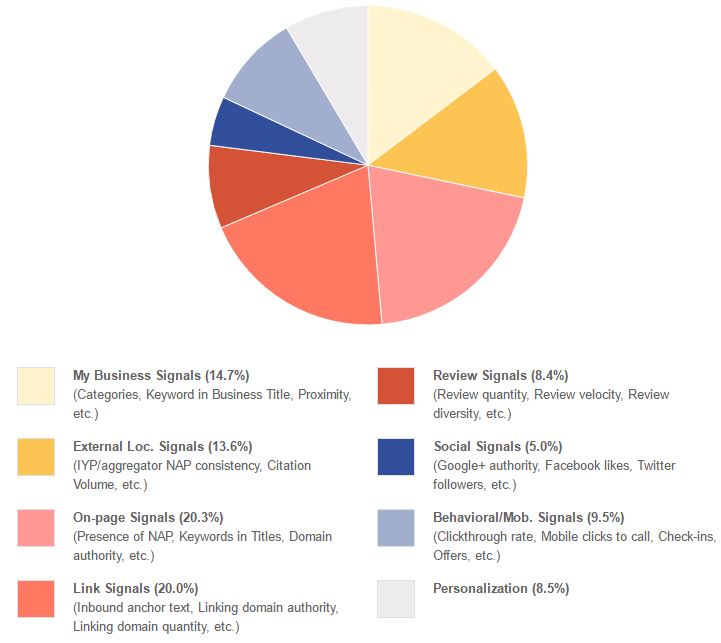
It became a matter of concern for many local businesses when Google recently chopped off the number of local pack results from seven to three (commonly called the snack pack update). Therefore, there is now a mad race between businesses as they scramble to reach the top three positions in SERPs. As Google unveils every update, the competition gets stiffer, which in turn calls for relevant changes in SEO strategies. Here is a list of top factors that are currently affecting your rankings and visibility, according to a survey report released by Moz.
The graph depicts the major ranking factors that are influencing the current local SEO ranking methods. Given the current scenario, taking action on these constraints can help you stay ahead of the curve!
Your page should plainly and clearly tell customers what your business is all about. This can be done by including effective and unique title tags, meta descriptions, headings, images, and high-quality content. Your NAP (Name, Address and Phone Number) should be clear and consistent throughout the website.
2. Link signals (20.0%)
As with traditional SEO, link building is a key factor for local SEO. Specify your details correctly and submit your business to Google’s My Business Page (GMB). Inbound links from websites that are in the same locality as yours or in a higher domain level than yours will increase your credibility online.
3. My Business signals (14.7%)
As a business, having a Google Business Page is crucial. This is how people are going to recognize you when they Google for local services like yours. To create an effectual business page, you can follow these tips: Be consistent, use high-definition images, create on-point descriptions about your business, try getting reviews and reply to them regardless of whether they are constructive or destructive.
4. External location signals (13.6%)
Be consistent while specifying your information. This is crucial for any business, including local businesses. When you are consistent about your NAP throughout the web space, it will definitely be a boon for your business. The more you submit your business to relevant directories and use your business name in social media, the more traffic you are likely to draw.
5. Behavioral/mob signals (9.5%)
Again this factor is an indicator as to why you should have aptly-titled pages with no duplicate meta descriptions. You also need to ensure that you have a good schema review markup. This can increase the number of times your business gets clicked.
6. Personalization (8.5%)
Search results are usually based on what for a user’s search behavior. Therefore, to counter this, you can increase your conversions resorting to other SEO advertising tactics like PPC (Pay Per Click) or display ads.
7. Review signals (8.4%)
Reviews are a powerful means of creating an impression about your business to customers. The number of reviews and their frequency can have a good impact on increasing your business value.
8. Social signals (5.0%)
Social media has always been a valuable means of impacting a business’ value. Whether it is Google+, Facebook, Twitter or Instagram, linking to and from social media posts can spread awareness about your brand.
Take all of the above factors into account while optimizing your website for the new local SEO constraints and gain an edge over your competition!
Image Source: https://moz.com/

